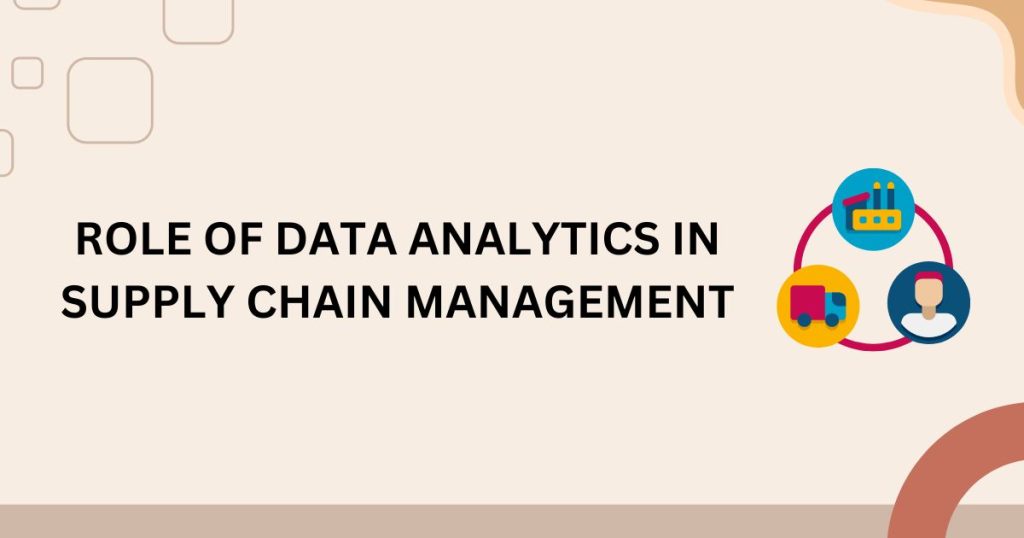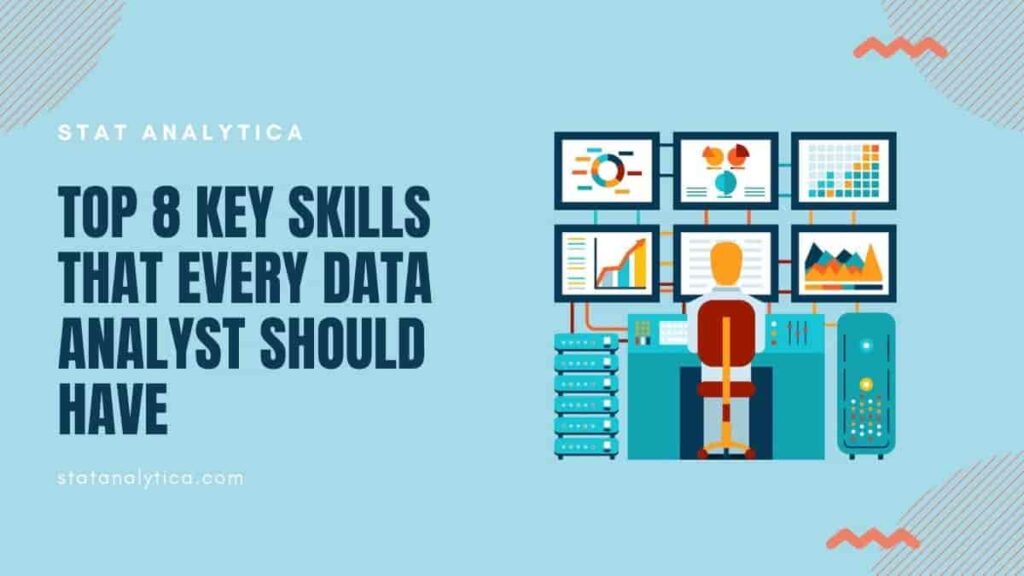Supply chain management (SCM) is an area that has grown more challenging than ever previously imagined due to globalization and fast increasing world economy. It can be seen that data analytics has now become a promising tool for raising company efficiency, improving decision making and predicting changes in markets. As large volumes of data are produced minute by minute, companies are therefore using analytics to get better insights to improve demand, inventory, logistics and many others. To this end, the following is a discussion of the key role of data analytics in supply chain management.
Role of data analytics in supply chain management
Table of Contents
1. Improving Demand Forecasting
Demand forecasting is a critical element in any supply chain because, when done correctly, it enables the organization to manage its inventory and resources. The past forecasting techniques may focus mainly on historical data, and thus, results may be misleading because they don’t take into account new and upcoming changes in the gap between buyers and sellers. Demand forecasting is greatly enhanced by data analytics where real-time data – seasonal, social media, and market data are also included in the historical sales data.
2. Improving Inventory Control
It provides control over inventory status so that products are made available at the right time and in the right location but at the most reasonable cost possible. The use of data analytics helps in near real-time view of inventory irrespective of the location, whether it is a warehouse, distribution center or store. This can help particular companies monitor the state of the stock, measure the capacities of safety stock, and make proper decisions on restocking.
3. Strategies for enhancing the procurement systems
Analytics are useful for improving procurement since they offer information on the supplier and the costs involved in the procurement process. Spend analysis enables the identification of procurement information so that cost-saving considerations like supplier combination or favorable contract terms can be realized. Some of the key benefits can be defined as follows: By having such visibility into spending patterns, organizations are able to make informed decisions about sourcing, the selection of suppliers and the management of contracts.
4. Facilitating, changing or modifying Transports and Deliveries
Logistics and transportation are functions of supply chain management, and with the aid of analytics, these functions have considerably improved in terms of route optimization, cost reduction, and increased delivery speed. Information from GPS, auto-tracking, and meteorological conditions helps in real-time options for a specific route that is best for the supply chain.
Business analytics also apply to load optimization to guarantee that trucks and containers are loaded to maximum, thereby cutting on transport costs.
5. Enhancing Supplier Relationship Management
And thus the fact that it is a universal fact that the success of the supply chain calls for the kind of relationship to be developed with the suppliers. Information technology supports these relationships by providing information regarding suppliers’ performance, quality, and other relevant risks. Suppliers’ reliability can be measured in terms of the performance that is achieved on the aspects that are important to supply chain management by, for instance, analyzing on-time delivery rates, defects rates, and response times.
It also helps to facilitate the selection of suppliers since it is easy to compare the facts of potential suppliers and make a sound evaluation.
6. Hazard Identification, Assessment and Control
Supply chains go through various different risks right from the beginning of the ministry to the end of it including disruptions of suppliers and unequal movements in the global markets. Data analytics allows firms to recognize possible hazards, as well as how they may be prevented. When it comes to the contingency risks, analysis of data from past activities allows companies to forecast the problems and come up with protective measures.
7. Enhance Customer Satisfaction Levels
It is an acknowledged fact that con sales, or customer satisfaction, can be used as the barometer of supply chain management success. This results in ensuring business values, which include customer values, including delivery, product availability and quality. Tracking of the consignments while in transit and in stock aids in fulfilling customers’ expectations as much as the product is released at the set time.
8. Making Real-Time Decision Possible
In a fast-changing market environment, flexibility of decisions is a key strength. Data analytics provides supply chain managers with a functional tool in some electronic dashboards, KPI and automated report generation. Real-time analytics give an idea of the performance at a given time, like a report card, so that corrective action can be taken instantly.
For example, consider a specific case where there is a signal of a delay in one of the organization’s supply chain activities; the managers can quickly examine other possible plans of action.
9. Sustainability is the future with cost reduction benefits.
Sustainability is an emerging trend in managing supply chains as corporations seek to cut their impact on the environment. Sustainability is embraced in the sense that data analytics assists with resource utilization, waste, and emissions reports. Companies can also apply analytics to find the shortest routes for the delivery of their stocks using minimal fuel, find suppliers who are environmentally conscious, and find out how to make minimal wastage through efficient storage of their stocks.
10. Leveraging Advanced Technologies: AI, Machine Learning, and IoT
machine learning and artificial intelligence (AI) accentuate the use of data analytics in supply chains. Most important, data mining by using AI approaches can scale and analyze large quantities of data for predictive outcomes like demand patterns or risk exposures. Machine learning models can learn from data over and over, gaining increased accuracy every time.
Conclusion: The Role of Data Analytics and its prospects in supply chain management
Today, supply chain data analytics has become the tool without which optimization of efficiency and timeliness of deliverables or customer satisfaction cannot be envisaged. Analytics extends the capability of demand and supply planning, inventory planning and control, logistics and risk management to increase the efficiency of supply chains.
As we look to the future, new technologies such as digital twins, blockchain, and artificial intelligence will play a big role in shaping the supply chain, they will generate more data for the continuous improvement of the supply chain. In the minds of the organizations that plan In order to stay competitive, data analytics as the feature of an ideal supply chain investment to foster sustainable supply chain resilience and customer value.
Conclusion
What is data analytics in supply chain management?
SCM data analytics deals with the analysis of different data in the different units of the supply chain most often using tools, techniques and methods of data analytics. The use of data analytics in SCM is to analyze data that will provide key insights to minimize wastes and enhance business decision-making.
What is the main aim of supply chain analytics?
The primary purpose of supply chain analytics is therefore tailored at enhancing and enhancing the operating effectiveness and dependability of the supply chain.
How is data used in the supply chain?
Data is used in the supply chain to improve decision-making, streamline operations, and enhance efficiency across various processes.


